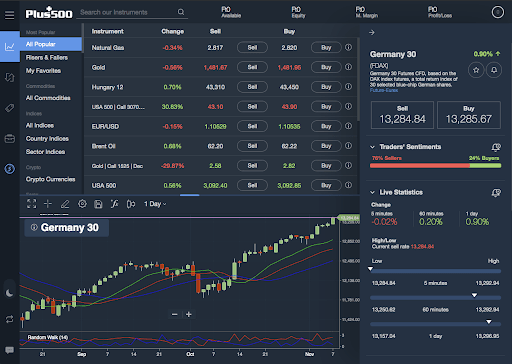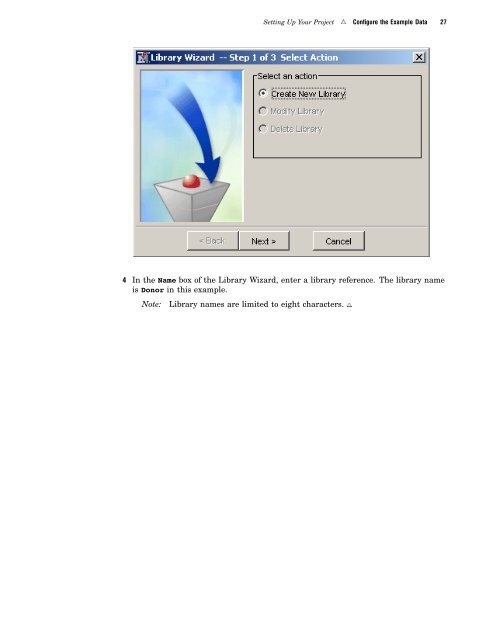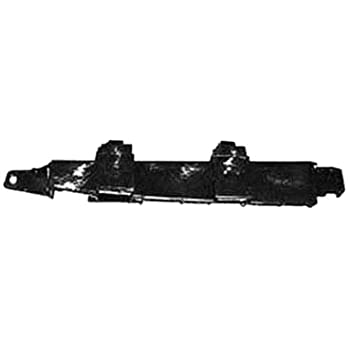
The role of an activation function is to introduce nonlinearity. An advantage of this is that the output is mapped from a range of 0 and 1, making it easier to alter weights in the future. The chain rule generalizes naturally to the case that is a function of more variables than and .
Deep-learning-based precise characterization of microwave … – Nature.com
Deep-learning-based precise characterization of microwave ….
Posted: Thu, 26 Jan 2023 08:00:00 GMT [source]
We start looping over every layer in the network on Line 71. The net input to the current layer is computed by taking the dot product between the activation and the weight matrix (Line 76). The net output of the current layer is then computed by passing the net input through the nonlinear sigmoid activation backpropagation tutorial function. Once we have the net output, we add it to our list of activations (Line 84). The purpose of the forward pass is to propagate our inputs through the network by applying a series of dot products and activations until we reach the output layer of the network (i.e., our predictions).
Why use the backpropagation algorithm?
We figure out the total net input to each hidden layer neuron, squash the total net input using an activation function (here we use the logistic function), then repeat the process with the output layer neurons. A feedforward neural network is an artificial neural network where the nodes never form a cycle. This kind of neural network has an input layer, hidden layers, and an output layer. It is the first and simplest type of artificial neural network.
ReLU Activation Function Explained – Built In
ReLU Activation Function Explained.
Posted: Fri, 28 Oct 2022 07:00:00 GMT [source]
If the derivative sign is negative, increasing the weight decreases the error. In other words, if it’s negative then decreasing the weight increases the error. If the derivative sign is positive, that means increasing the weight increases the error. As we discussed previously, the training process has 2 phases, forward and backward.
Basics of Deep Learning: Backpropagation
If we let be the output, we now recursively compute for every intermediate value . As a corollary, if you already managed to compute the values , and you kept track of the way that were obtained from , then you can compute . Calculating the final value of derivative of C in (a_2)³ requires knowledge of the function C. Since C is dependent on (a_2)³, calculating the derivative should be fairly straightforward. Again, these weight values are randomly sampled and then normalized. Now, we’re ready to do the forward and backward pass calculations for a number of epochs, using a “for” loop according to the next code.

Proper tuning of the weights allows you to reduce error rates and make the model reliable by increasing its generalization. Then, we use only one training example in every iteration to calculate the gradient of the cost function for updating every parameter. It is faster for larger datasets also because it uses only one training example in each iteration. Once the forward propagation is done and the neural network gives out a result, how do you know if the result predicted is accurate enough. This is where the back propagation algorithm is used to go back and update the weights, so that the actual values and predicted values are close enough.
Interpreting results of backpropagation
With a simple and differentiable objective function, we can easily find the global minimum. In the backward pass, the flow is reversed so that we start by propagating the error to the output layer until reaching the input layer passing through the hidden layer(s). The process of propagating the network error from the output layer to the input layer is called backward propagation, or simple backpropagation. The backpropagation algorithm is the set of steps used to update network weights to reduce the network error. It is a standard form of artificial network training, which supports computing gradient loss function concerning all weights in the network.
The predictions array has the shape (450, 10) as there are 450 data points in the testing set, each of which with ten possible class label probabilities. We then initialize a list, A, on Line 67 — this list is responsible for storing the output activations for each layer as our data point x forward propagates through the network. We initialize this list with x, which is simply the input data point. Again, note that whenever you perform backpropagation, you’ll always want to choose an activation function that is differentiable. Each layer in the network is randomly initialized by constructing an M×N weight matrix by sampling values from a standard, normal distribution (Line 18). The matrix is M×N since we wish to connect every node in current layer to every node in the next layer.
This is the standard way of working with neural networks and one should be comfortable with the calculations. However, I will go over the equations to clear out any confusion. The basic process of deep learning is to perform operations defined by a network with learned weights.
It is used for models where we have to predict the probability. Since the probability of any event lies between 0 and 1, the sigmoid function is the right choice. The sigmoid function pumps the values for which it is used in the range, 0 to 1. The calculations we made, as complex as they seemed to be, all played a big role in our learning model.
The next table shows the single training sample with the input and its corresponding desired (i.e. correct) output for the sample. Static Back Propagation − In this type of backpropagation, the static output is created because of the mapping of static input. It is used to resolve static classification problems https://forexhero.info/ like optical character recognition. By knowing which way to alter our weights, our outputs can only get more accurate. Lastly, to normalize the output, we just apply the activation function again. Remember that our synapses perform a dot product, or matrix multiplication of the input and weight.
To finish off the computation of the delta, we multiply it by passing the activation for the layer through our derivative of the sigmoid (Line 110). We then update the deltas D list with the delta we just computed (Line 111). The final entry in A is thus the output of the last layer in our network (i.e., the prediction). Backpropagation is arguably the most important algorithm in neural network history — without (efficient) backpropagation, it would be impossible to train deep learning networks to the depths that we see today. Backpropagation can be considered the cornerstone of modern neural networks and deep learning. Backpropagation defines the whole process encompassing both the calculation of the gradient and its need in the stochastic gradient descent.
When we are training the network, we are simply updating the weights so that the output result becomes closer to the answer. In other words, with a well-learned network, we can correctly classify an image to whatever class it really is. We calculate the gradients and gradually update the weights to meet the objectives. An objective function (aka loss function) is how we are going to quantify the difference between the answer and the prediction we make.
It can also make use of a highly optimized matrix that makes computing of the gradient very efficient. Now, let’s generate our weights randomly using np.random.randn(). One to go from the input to the hidden layer, and the other to go from the hidden to output layer. However, it is not the same, a point made by this blog post of Lunjia Hu and also here. Now that we have implemented our NeuralNetwork class, let’s go ahead and train it on the bitwise XOR dataset.
In the forward pass, the following lines are executed that calculate the SOP, apply the sigmoid activation function to get the predicted output, and calculate the error. This appends the current network prediction and error in the predicted_output and network_error lists, respectively. It is a widely used algorithm that makes faster and accurate results. The dataset, here, is clustered into small groups of ‘n’ training datasets. In every iteration, we use a batch of ‘n’ training datasets to compute the gradient of the cost function. It reduces the variance of the parameter updates, which can lead to more stable convergence.
The next figure presents the chain of derivatives to follow to calculate the derivative of the error W.R.T the parameters. Between the input and output layers, there might be 0 or more hidden layers. In this example, there are 2 hidden layers with 6 and 4 neurons, respectively. Note that the last hidden layer is connected to the output layer. The output layer is the last layer which returns the network’s predicted output.
The same procedure can be followed to learn how the NN prediction error changes W.R.T changes in network weights. So, our target is to calculate ∂E/W1 and ∂E/W2 as we have just two weights W1 and W2. The parameters-update equation just depends on the learning rate to update the parameters.
- No problem, we can inspect how each term (desired & predicted) of the previous equation is calculated, and substitute with its equation until reaching the parameters.
- In other words, we need to use the derivative of the loss function to understand how the weights affect the input.
- The data points p are updated by taking the dot product between the current activations p and the weight matrix for the current layer, followed by passing the output through our sigmoid activation function (Line 146).
- Now, let’s generate our weights randomly using np.random.randn().
- It is useful to solve static classification issues like optical character recognition.
Then, the inner product of that gradient to the input values (z’) will be the gradient with respect to our weights. Also, the inner product of the gradient to the weights (w) will be the next passing gradient to the left. The calculate_loss function requires that we pass in the data points X along with their ground-truth labels, targets. We make predictions on X on Line 155 and then compute the sum squared error on Line 156. The loss is then returned to the calling function on Line 159.














